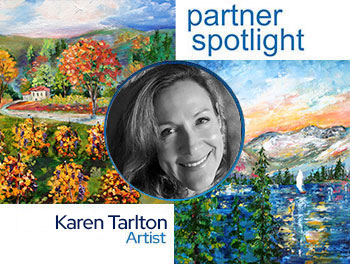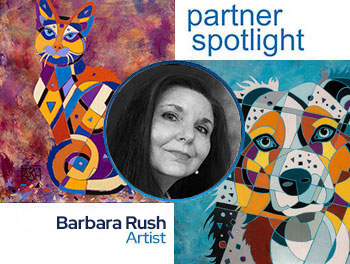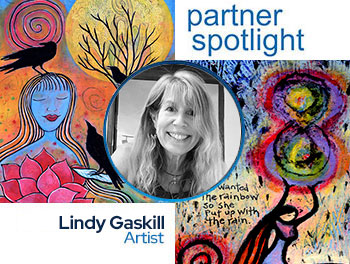In today’s Partner Spotlight, we talked with digital artist Brandie Adams-Piphus about her artistic process and influences. Her portraits explore gender roles and sexuality, while dealing with the constraints of racial bias. She founded BAPart to help others find their creative potential through self-expression and the arts; expanding her gallery to offer other aspiring female artists who wish to expand their audience a chance to do so. She works with Lumaprints by making her art available for sale.
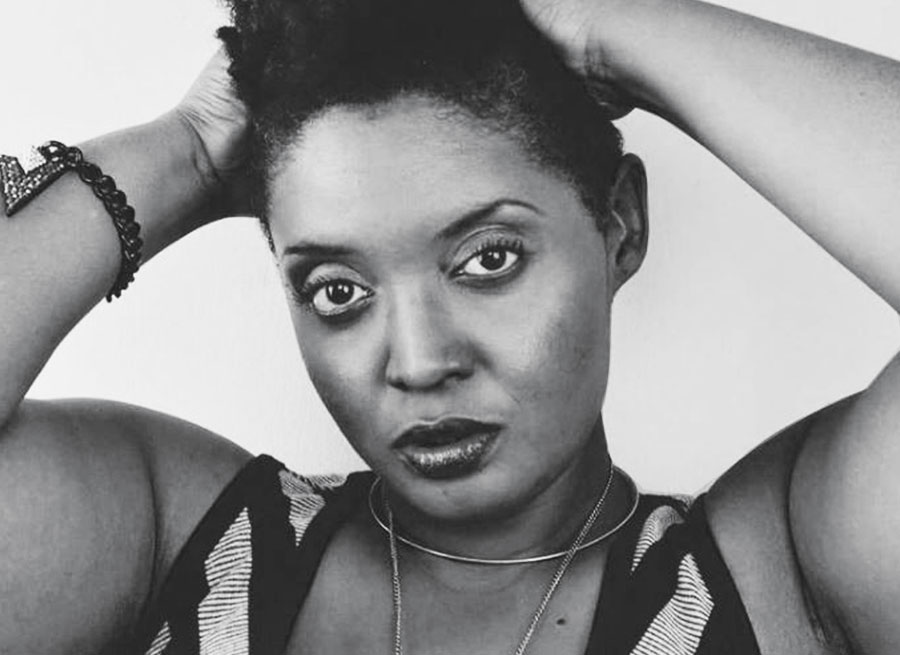
Watch the full interview below. If you prefer to read, continue on.
- What media do you use for your art style? Is there a specific reason why you chose this media?
I am a digital artist by trade. So I use a program called Adobe Illustrator to do computer-based design. I have a tablet that hooks to my laptop and I use that as my drawing tool. I prefer that as my media because it is mess-free. And I am such a perfectionist when it comes to art that I like the ability to be able to delete and start over. One of the things that I love to do when I’m creating a portrait is delete the last stroke that I made and all I have to do is just click undo. So, you know, it is somewhat similar to traditional painting, but I just like the convenience of technology like a lot of us do.
- Can you describe your art and your art style?
So it’s actually really hard to answer that question because if you followed me for a while, you’ll know that I have various art styles that I paint in. I’m someone who, if I see something new, I get inspired and I like to try it. And then, I go down a road of obsession and as I try to capture that thing that inspired me. Currently, some of the works that you all have been putting in home goods are they emanated from a recent inspiration I had with minimal portraits which are portraits where the features aren’t completely defined on the subject. They don’t have eyes, all they have is the lips, the lash line and the nose. It’s a very low-level portrait without much detail and I use lots of vibrant colors when I create those along with various textures, patterns. And I’m inspired by botanicals so you’ll see a lot of flowers and leaves and botanical elements in my art.
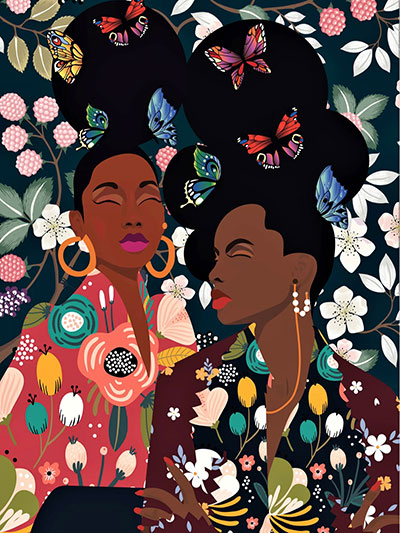
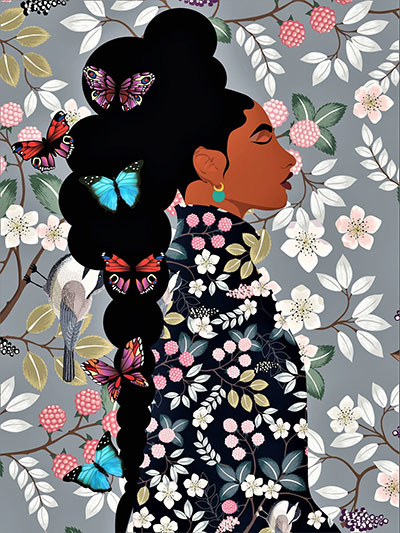
- Who or what is your inspiration in doing your art?
My main inspiration is — I would say my goal is to contribute to equity in the arts and equality in the arts. I want to ensure that every woman, regardless of the color of their skin or their race or their creed are represented in the arts. And I focused mainly on portraits of African American women for that particular purpose because there are a lot of us who go to stores to try to find an art that represents who we are as women and we don’t often see that. So that’s kind of the main catalyst behind the work that I create — is to ensure that women of all shades and skin tones are captured in art. And also that we as black women can see positive representations of ourselves in arts, not just sometimes the negative connotations that you hear about black women. That’s kind of what drives me.
- This month, we’ll be commemorating Women’s History. Can you tell us about a female artist from history who has influenced your work?
I would say that my work is largely influenced by an artist that I follow named J Purple Brown, but she’s not a historical figure. She’s actually a current modern day artist. When it comes to women, historical figures that have inspired me, it’s actually Maya Angelou, who I view as somewhat a feminist and someone who believes in creative expression as a way to help people achieve enlightenment. And that’s primarily why I paint because I really do believe that art has healing power, I think it has the ability to unify people across lines of culture, and help people to have an awakening. So I try to infuse that into every piece of work that I create. I wanted to have a healing impact on people. So, you’ll see a lot of the titles of my pieces have a lot to do with healing and self empowerment and messages promoting positive mental health and things like that.
- Can you discuss a piece of art that you’ve created that is inspired by women’s history, and what message you hope to convey through it?
Well, I do have a large body of historical pieces and they are in the style of low poly illustrations. So those pieces are made with triangles that share intersecting points. And I do have a number of strong women figures that mean a lot to me as part of that collection. I do have a piece of Maya Angelou and that piece is made up of over 10,000 little tiny triangles. And I have another piece of Cicely Tyson who was another mover and shaker who was at the forefront of helping black women embrace their unique beauty and creating acceptance for women of darker skin shades. So those are two women that I capture in that line of work.
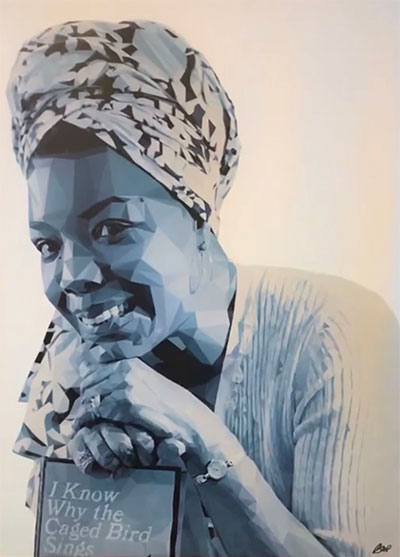
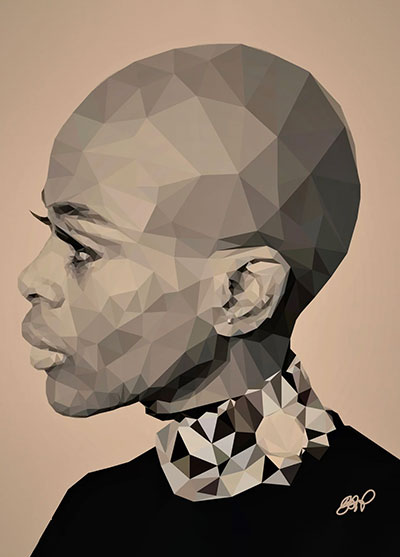
- How do you balance being a woman in the art world with other identities, such as race or sexuality?
I guess what I’m trying to say is I worked very hard to be viewed as an artist that has merit and not to be viewed as someone who is valued for just being a woman. And you know, a lot of times when you’re working in a male dominated field, you can be typecast based on your sexuality as opposed to your talent and your business acumen. I work very hard to ensure that I am maintaining professionalism in the arts world and working hard to garner respect for being a woman in business who is making moves for myself and establishing the company that I know will ultimately help the woman’s movement as a whole.
- What advice would you give to young women who are aspiring to become artists?
The advice that I always give on to women who want to be an artist is to trust your voice and not to compare yourself to others. I mean, being an artist fundamentally boils down to believing in yourself and being vulnerable enough to share your unique voice and creative expression with the world without comparing yourself to other people. And I can tell you that I dealt with sexism myself from my ex husband who when I first told I wanted to start to learn Adobe illustrator and practice art because he was a graphic designer at the time. He didn’t think that I could do it. And I think part of the reason he didn’t think that I could do it was because I was a woman. So that was one naysayer that I dealt with. And I had to teach myself the craft. I picked up a book on Adobe illustrator and I taught myself how to use the program.
And here I am today, I also had to trust my own creative voice. And even when I wasn’t as skilled as an artist as I am now, I still made myself vulnerable enough to put my work out there. And at the time when I started doing it, I actually had friends who didn’t even understand why I was doing art or why I was calling myself an artist. I hung around lots of other artists who were established artists that were really very skilled in the work that they were doing. My work did not compare. But I mean, the only way that I got to where I am today is by choosing to believe in myself and choosing to focus on honing my skills. And that’s how I ended up where I am today.
- Lastly, can you share a favorite quote or saying that you live by?
“She became the journey.” I just know that my sister often mentions that quote and it really inspires me because it reminds you to live in the moment. It reminds you that life is not about being perfect or having a perfect experience, but it’s about growing along the way until you get to your destination.
Learn more about Brandie and her art:
Website: BAPart Store
Instagram: @bapart11
Facebook: bapiphusart
Email: [email protected]


